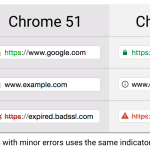Unlocking the Power of Search: Best Practices for Optimizing Content for Search Engines

In the digital age, optimizing website content for search engines is paramount to improving visibility, attracting organic traffic, and reaching your target audience effectively. By implementing best practices for search engine optimization (SEO), you can enhance your content’s discoverability, increase rankings, and ultimately drive valuable user engagement. This essay delves into a comprehensive set of strategies and best practices for optimizing content to captivate search engines and maximize organic reach.
Conduct Thorough Keyword Research:
Keyword research forms the foundation of effective content optimization. Utilize keyword research tools to identify relevant keywords and phrases that align with your content and target audience. Focus on long-tail keywords that reflect user intent and have reasonable search volume. Incorporate these keywords naturally throughout your content, including in headings, subheadings, meta tags, and image alt tags.
Create High-Quality and Valuable Content:
High-quality content is the cornerstone of successful SEO. Search engines prioritize content that is informative, well-researched, and unique. Aim to answer user queries comprehensively and address their pain points. Craft engaging and well-structured content that holds the reader’s attention, encourages sharing, and establishes your authority in the field.
Optimize On-Page Elements:
Optimize various on-page elements to improve search engine visibility. Include your target keyword in the page title, meta description, URL, and headings. Craft compelling and concise meta descriptions that entice users to click on your content in search engine results. Structure your content with headings (H1, H2, H3, etc.) to enhance readability and signal the hierarchy of information to search engines.
Enhance User Experience and Page Load Speed:
User experience is a critical factor in SEO. Ensure your website is mobile-friendly, responsive, and provides a seamless browsing experience across devices. Optimize your website’s design, navigation, and user interfaces to facilitate easy exploration and engagement. Additionally, prioritize fast page load times by optimizing images, minimizing HTTP requests, enabling browser caching, and utilizing content delivery networks (CDNs).
Harness the Power of Link Building:
Link building plays a vital role in SEO by signaling to search engines that your content is trustworthy and relevant. Focus on both internal and external linking. Internally, incorporate relevant internal links within your content to guide users to related articles or pages on your website. Externally, include outbound links to reputable sources that provide additional value and context to your content.
Optimize Images for Search Visibility:
Optimizing images is often overlooked but can significantly impact your content’s search engine visibility. Compress images to reduce file sizes without compromising quality, improving page load times. Use descriptive file names and include relevant keywords in image alt tags. Alt tags provide textual descriptions of images, helping search engines understand their context and content.
Leverage Schema Markup:
Implementing schema markup, or structured data, provides search engines with additional context about your content. Schema markup helps search engines understand and display your content more effectively in search results. It enables rich snippets, which can include information such as product details, reviews, ratings, events, and more, depending on the nature of your content.
Regularly Update and Optimize:
SEO is an ongoing endeavor that requires continuous updates and optimization. Regularly evaluate your content’s performance using analytics tools and make data-driven improvements. Update outdated information, refresh existing content, and create new content to address emerging trends and user needs. This signals to search engines that your website is active and provides fresh, valuable content.
Build Authoritative Backlinks:
Earning high-quality backlinks from authoritative websites is instrumental in boosting your content’s SEO. Develop a strategic outreach campaign to connect with relevant influencers, industry experts, and authoritative publications. Guest posting, creating valuable resources, and participating in industry forums and discussions can help you secure valuable backlinks that enhance your content’s credibility and visibility.
Monitor and Analyze Performance:
Continuously monitor your website’s performance using analytics tools to gain insights into user behavior, organic traffic, bounce rates, and keyword rankings. Analyze this data to identify trends, track the impact of optimization efforts, and refine your strategies accordingly. Regular monitoring allows you to stay agile, adapt to changing algorithms, and make data-backed decisions to improve your content’s search engine performance.
Optimizing content for search engines is a multifaceted process that requires a combination of technical expertise, keyword research, content creation, and user-focused strategies. By implementing these best practices, you can unlock the power of search and improve your content’s visibility, rankings, and organic reach. Remember, quality content that addresses user needs, coupled with strategic optimization, is the key to captivating search engines, driving organic traffic, and achieving long-term SEO success.




















